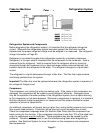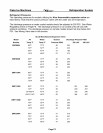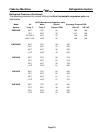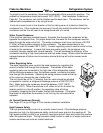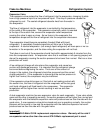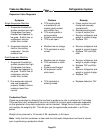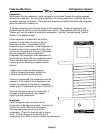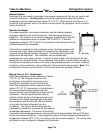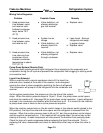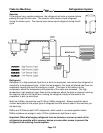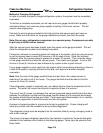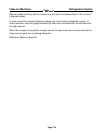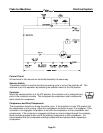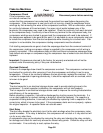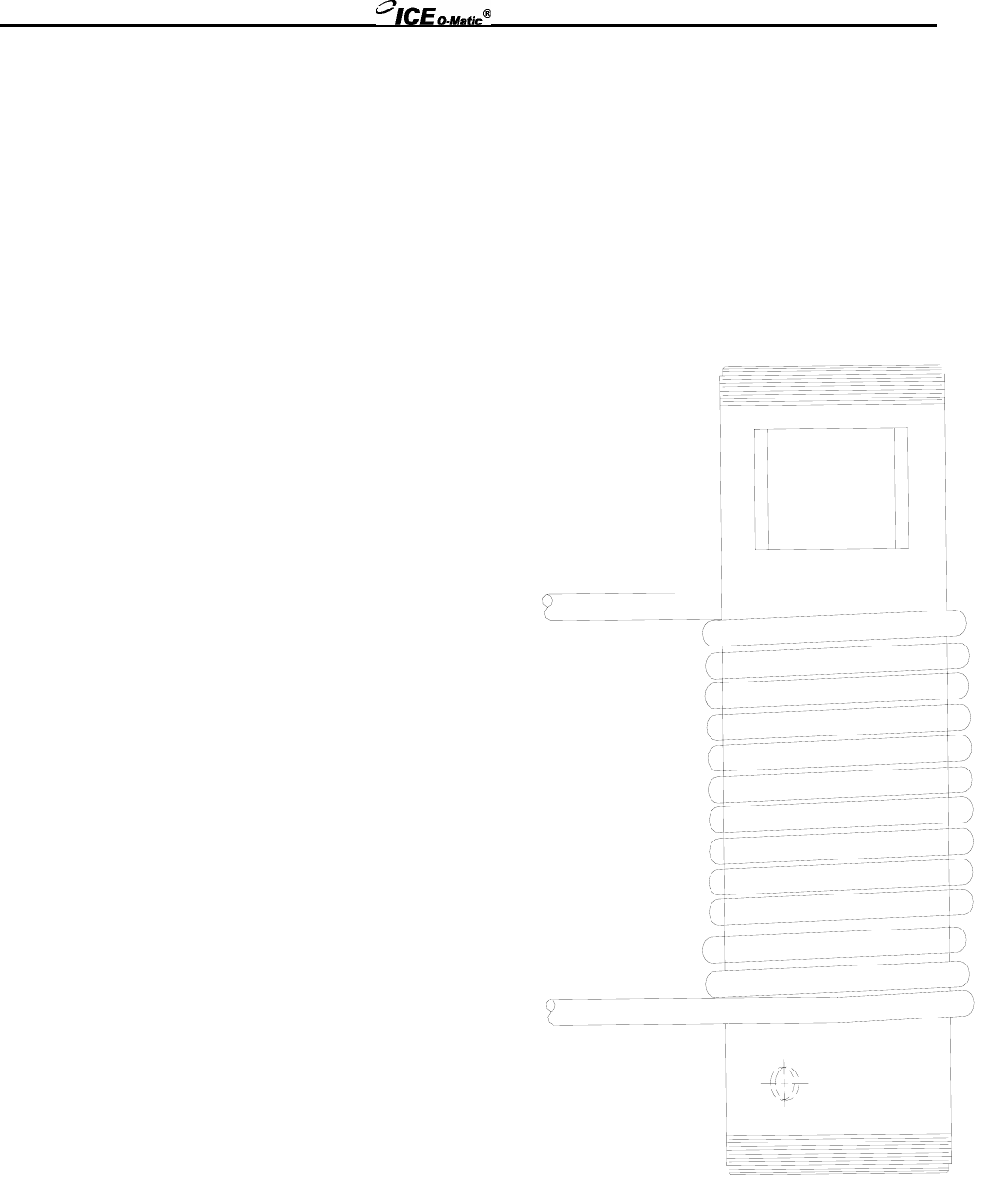
Flake Ice Machines Refrigeration System
Page F9
Evaporator
When water fills the evaporator, liquid refrigerant is circulated through the tubing wrapped
around the evaporator. As the liquid refrigerant in the tubing vaporizes, it absorbs heat from
the water, causing it to freeze. The evaporator should be completely flooded with refrigerant
while the machine is making ice.
A flooded evaporator will build ice evenly in the evaporator. A starved evaporator will
produce less ice and the ice will be wetter than normal. Most problems with ice quality or
“freeze ups” are not related to a defective evaporator. Use the Troubleshooting Trees in
Section C for additional help.
If the evaporator is flooded but the suction
pressure is lower than normal and the ice
production is slow, it is possible that the
evaporator has a restriction. If the evaporator is
flooded but the suction pressure is higher than
normal and ice production is slow, it is possible
that the evaporator has coil separation.
Evaporator coil separation is the separation of
the refrigerant tubing from the evaporator barrel.
This is rare but may occur from time to time.
Usually all of the following symptoms will be
present.
• Higher than normal suction pressure.
• Cold or frosted compressor suction line.
• Slow ice production and/or wet ice.
If the coil is separated, the evaporator must be
replaced. If the outlet of the evaporator is not
frosted, the problem is not with coil separation.
(Refer to the Troubleshooting Trees in Section C
As liquid refrigerant leaves the evaporator, it
changes to a low pressure vapor before
returning to the compressor.
Important!
Liquid refrigerant must not return to the
compressor or damage may result. Frost on the
suction line at the inlet of the compressor
indicates liquid may be returning to the
compressor. Check for frost during the freeze
cycle. If liquid refrigerant is returning to the
compressor, the problem must be located and corrected.



